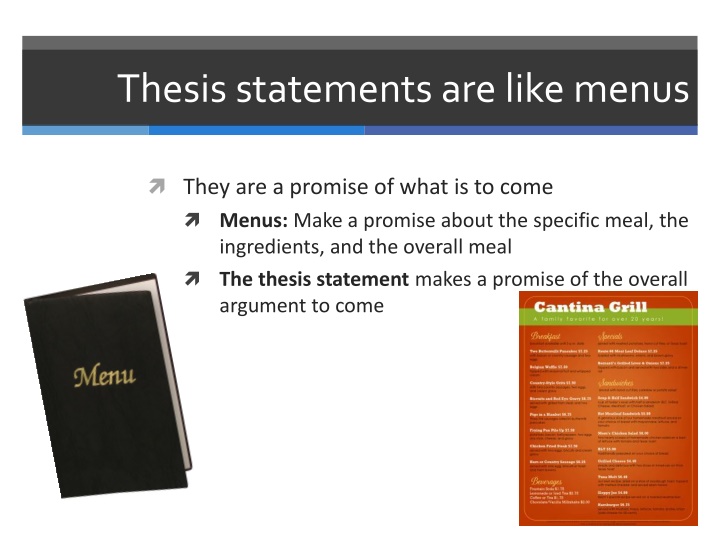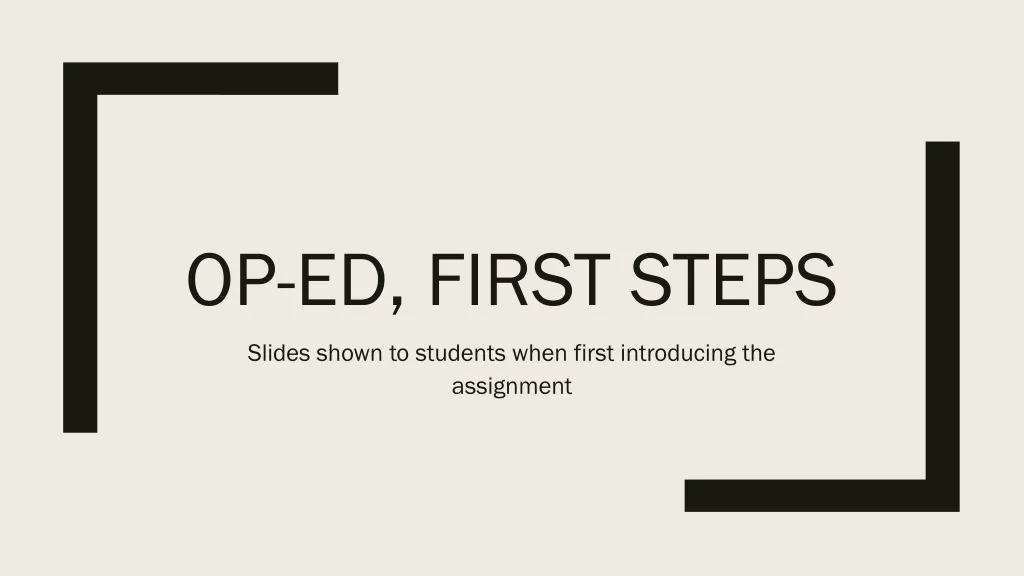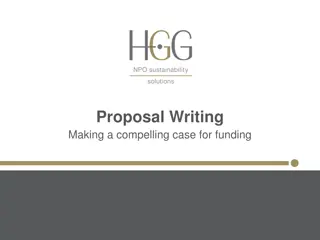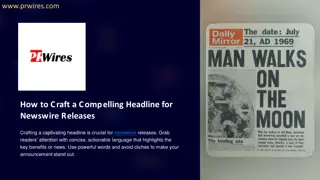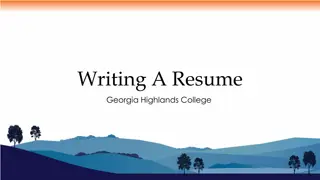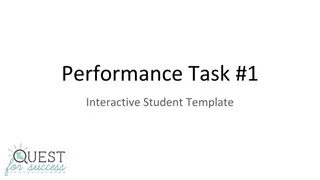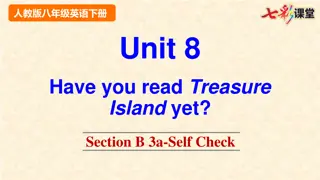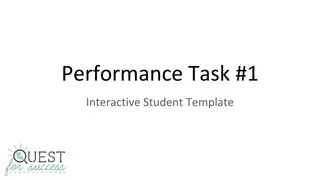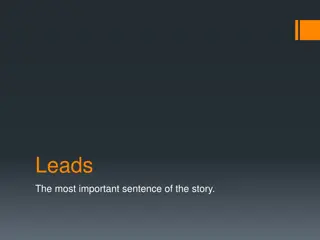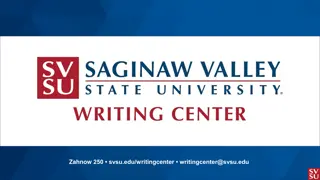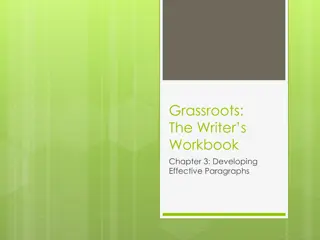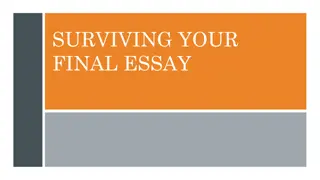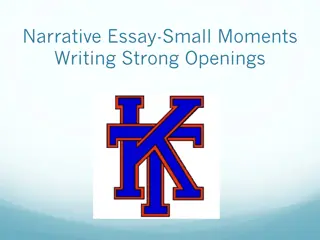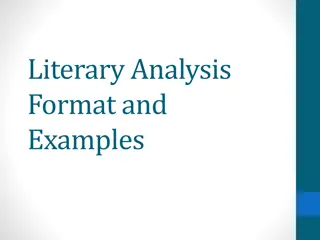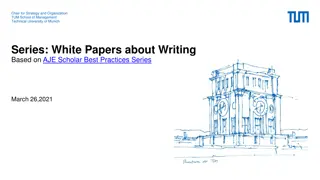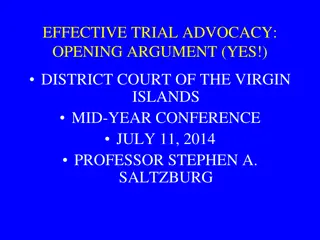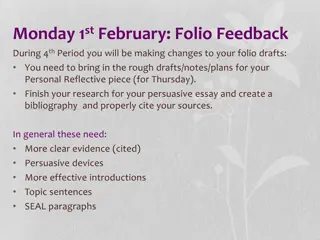Crafting Compelling Introductions: A Writer's Guide
Crafting a captivating introduction is like preparing a delicious meal that entices readers to stay engaged. Just like menus and free samples lure diners, introductions hook readers with a promise of what's to come. This guide explores the analogy between introductions and food samples, providing tips and a checklist for creating enticing introductions that leave readers hungry for more.
Download Presentation

Please find below an Image/Link to download the presentation.
The content on the website is provided AS IS for your information and personal use only. It may not be sold, licensed, or shared on other websites without obtaining consent from the author.If you encounter any issues during the download, it is possible that the publisher has removed the file from their server.
You are allowed to download the files provided on this website for personal or commercial use, subject to the condition that they are used lawfully. All files are the property of their respective owners.
The content on the website is provided AS IS for your information and personal use only. It may not be sold, licensed, or shared on other websites without obtaining consent from the author.
E N D
Presentation Transcript
Thesis statements are like menus They are a promise of what is to come Menus: Make a promise about the specific meal, the ingredients, and the overall meal The thesis statement makes a promise of the overall argument to come
Introductions are like free samples Free samples are sometimes given to persuade the buyer to purchase the meal or produce Introductions preview the topic, the thesis, the context, and sometimes the reasons why
Introductions and Free Samples When a customer can t decide whether or not to buy a food item, the story will sometimes give a free sample to persuade them. Restaurants and business owners know that sometimes you have to hook them with a little taste so they will crave it even more! Introductions are like those free samples: they HOOK the reader and get them ADDICTED for more. It s not just about a great opening line; you also need to convince the reader to keep going. They are also ACCURATE. They are the same ingredients the full serving has, just a smaller dose of it.
Recipe for a good Introduction The mix-ins (the hook): Seize my taste-buds attention with an interesting quote, fact, question, statement. The ice cream (context or reasons): This is a majority of your introduction paragraph and what holds it all together. Provide any context I will need to understand what you re writing about and why, AND/OR preview what your main points are going to be The spoon (thesis statement): Just like a spoon actually delivers the important stuff (the food) to your mouth, a thesis statement carries the main message to the reader
Words of Caution: Don t give away too much for free. Introductions that are TOO long lose our attention AND they are also probably stating too much that should be saved for a body paragraph later. Don t hand us the wrong flavor. If I want chocolate ice cream, don t hand be blueberry! Make sure your intro actually previews what the essay will be about and that they match.
Introduction Checklist Does your paragraph: Grab the reader s attention with a hook? Give the reader any background information that he/she needs to understand this topic? Give the reader any previews of what you will discuss in the essay Finish with a strong, clear thesis statement to make the reader keep reading?
Quotes Thesis: Every action Gatsby makes is with the intention to win back Daisy s love, which only ends up hurting Gatsby in the end. I didn t want you to think I was just some nobody. You see, I usually find myself among strangers because I drift here and there trying to forget the sad thing that happened to me (Fitzgerald 67).
Introducing Quotes Provide context: Who says the quote, what is happening in the story at the time, what makes it significant, etc. Despite all the rumors told about Gatsby, he does little to clear the air with his hundreds of guests. This changes when he meets Nick. The first time Gatsby explains his past to Nick, he also explains why he chose to dispel the rumors for Nick. I didn t want you to think I was just some nobody. You see, I usually find myself among strangers because I drift here and there trying to forget the sad thing that happened to me (Fitzgerald 67).
Analyzing Quotes Despite all the rumors told about Gatsby, he does little to clear the air with his hundreds of guests. This changes when he meets Nick. The first time Gatsby explains his past to Nick, he also explains why he chose to dispel the rumors for Nick. I didn t want you to think I was just some nobody. You see, I usually find myself among strangers because I drift here and there trying to forget the sad thing that happened to me (Fitzgerald 67). Gatsby has worked his whole life to make something of himself and has finally landed on one place to live. He feels little loyalty to the strangers that show up at his house because his main focus is to find Daisy. By finding Daisy he will be able to erase the sad thing that happened, because he will once again have her in his arms. His lack of deeper connection to strangers that come to his parties leave him alone in the end. His narrow desire for Daisy blinds him from the people that surround him. What does this quote show about your character? Why is it significant? How does it relate to your thesis?
Transitions are like waiters Waiters take away old plates, fill cups, and bring each new set of food Transitions connect the sentences within the paragraphs as well as across paragraphs themselves
Proofreading is like checking your teeth Make sure you didn t miss a spot!
Conclusions are like dessert Objective: Write a conclusion paragraph that logically follows and supports any previous content Although desserts are delicious any time of the day, we eat them at the end of dinner because they leave us with a good impression of the meal we just had. Your conclusion should leave the reader feeling content, impressed, and maybe even inspired.
Recipe for a good conclusion: Pie crust: Restate the thesis USING NEW WORDS (PARAPHRASING) Cheesecake: Review the major points of the essay concisely and USING NEW WORDS Whipped cream: Mention the legacy, significance, lessons we can learn, or other takeaways (THE SO WHAT ) Strawberry Garnish: a final statement that is either a call to action (argumentative) or a more subtle closing thought (informative)
Words of caution Think about portion control: you don t want the reader to still feel hungry (too short) or stuffed to the point of illness (too long) Stay consistent with the tone / style of the paper don t suddenly become more or less formal Do not introduce brand new facts for the first time. This is where you analyze, restate, or generalize main points from your essay. Don t let anything from your conclusion be random or off-topic
Conclusion Checklist Does your paragraph: Restate your thesis with new language? Review the previous main points? End with a final sentence that concludes, inspires, or motivates? Keeps the reader s attention? Stay consistent?
Works Cited All Credit for this PowerPoint belongs to Secondary Sara Hardin. Her blog can be found at: http://secondarysara.blogspot.com/ and her teachers pay teachers site can be found at: https://www.teacherspayteachers.com/Store/Secondary-Sara
